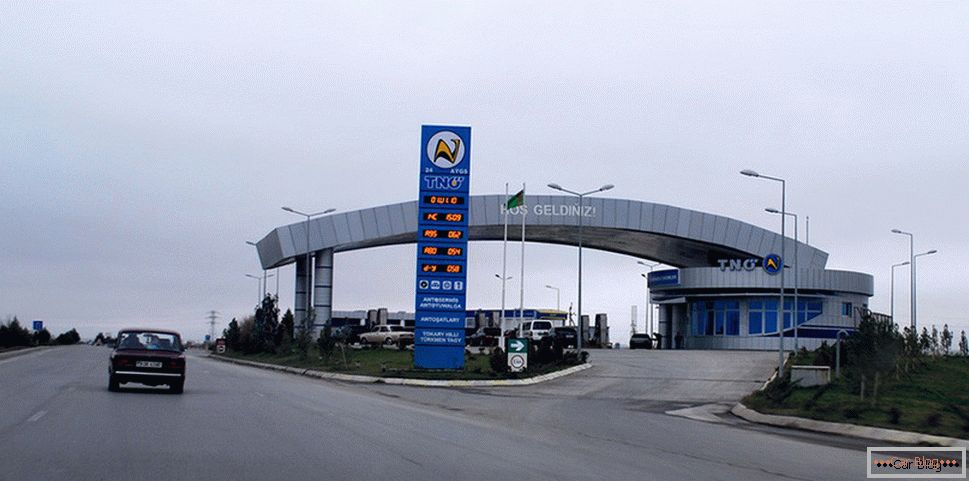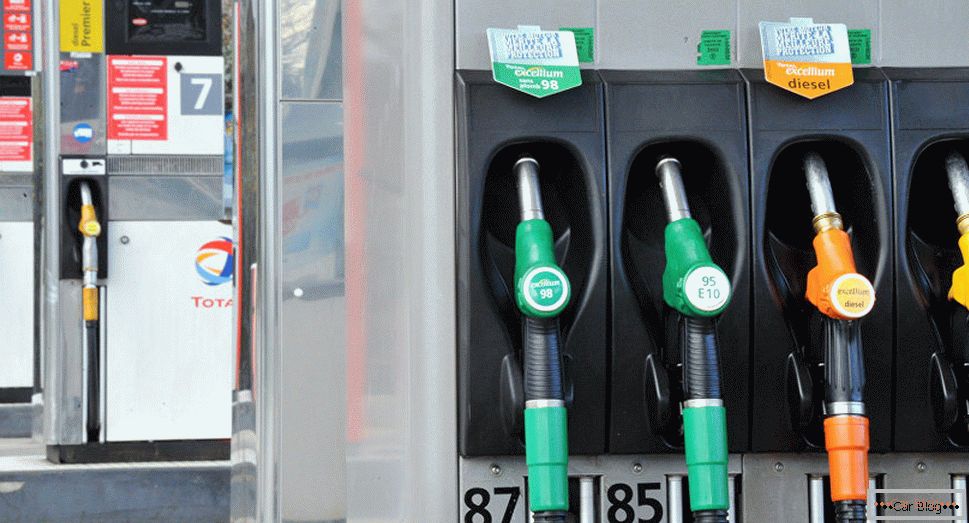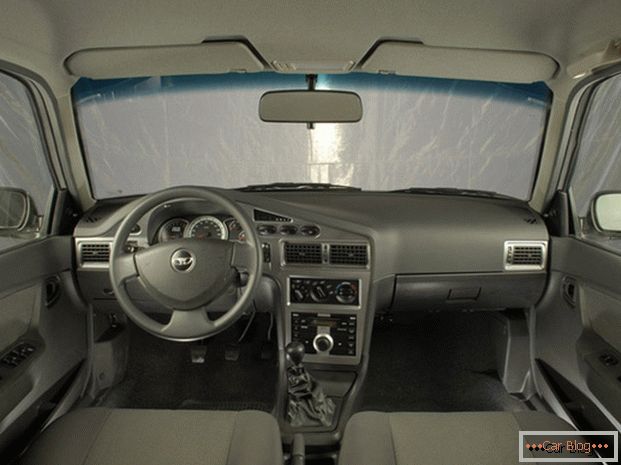>
It is difficult to imagine a modern person without a car. Statistics clearly show that in our country almost every family has a vehicle. Those who could not get a car, go to public transport. Moreover, all vehicles, both personal and public, require the presence of fuel. There are rare exceptions in the form of electric cars that do not need petroleum products. But still the vast majority of cars run on gasoline. Each country has the opportunity to purchase oil, on the basis of which gasoline is subsequently produced. At the same time, taxes and other duties are often introduced within the state, which entails a rise in fuel prices and the formation of a significant gap between prices in different countries.

Comparison of the cost of gasoline in the world.
Интересен и тот факт, что развитые страны сильнее повышают внутренние налоги, нежели бедные государства. А потому и богатые платят за бензин больше, а бедные меньше. Но это условное обозначение, поскольку в каждой, даже самой развитой стране, существуют разные слои населения. Единственным исключением из правила можно назвать Соединённые штаты Америки. Экономика у них очень хорошо развита, но при этом они могут устанавливать довольно низкие цены на горючее. И не все понимают, почему у одних бензин дешёвый, а у других невероятно дорогой. Ведь при этом стоимость нефти для всех одинаковая. В этом вопросе следует разобраться. А также стоит рассказать об актуальных ценах на бензин в разных уголках мира.Читать далее про сравнение цен на бензин в мире-->
Pricing factors
Someone will say that in Russia the price of gasoline and the same diesel fuel is very high. But when compared with some other countries, it turns out that these price tags are far from high. Everyone wants cheap fuel. At the same time, not everyone understands what influences the final cost inside the country, and whether it is possible to somehow achieve a real fall in prices. There are several main factors that directly affect the rising cost of fuel at gas stations. And they are relevant for any state. Just in different countries they are implemented somewhat differently.
- Manufacturability. Here we are talking about the technological level of processing of purchased or extracted petroleum products. Technologies are constantly evolving, innovative solutions are being introduced, but this does not happen to everyone. Many enterprises that are engaged in oil refining, simply do not have enough new solutions, fresh equipment aimed at improving the efficiency of the plant. If oil products are processed on outdated equipment, production efficiency will fall. Therefore, cost optimization is out of the question here. To work on old equipment you need to spend more money and spend more oil to get a certain amount of the final product in the form of gasoline. Modern enterprises with new installations are able to quickly and efficiently turn oil into excellent gasoline. Then it will be cheaper.
- Oil companies, especially their policies and status. If it is a large oil-producing and oil-refining company with a big name on the market, then its products will cost more. This situation is similar to many manufactured products, where the consumer pays not only for high quality, but also for the brand. But in the case of gasoline, you cannot achieve high status with ordinary advertising. Here the key role is played by the real quality of oil refining.
- The location of the gas station. In many countries, the cost of fuel for them depends on the location of the gas station. The farther away from large settlements and places with a potentially large flow of customers is refueling, the lower prices will be on it. This encourages them to visit, even despite the distance.

- Seasonality. Statistics clearly indicate that most motorists are more actively exploiting their vehicles in the spring and summer, and by the fall and winter, the activity is decreasing. Therefore, in the high season, companies usually increase the cost of fuel in order to get the maximum profit.
- Monopolists. If the country has a monopolist in the field of oil refining, the cost of gasoline will directly depend only on it. But the presence of competition, joint-stock and subsidiary companies allows you to respond to supply and demand, regulate fuel prices as needed. This forces a number of enterprises to more adequately relate to pricing, otherwise consumers simply go to those who have cheaper gasoline.
- Country policy. In the countries that export oil, fuel pricing is almost entirely dependent on the economic stability of the domestic market. Therefore, when forming the cost, it is necessary to take into account an increase or decrease in oil exports, a reduction in domestic supplies and a number of other factors.
- The range of fuel. To make a certain type of fuel, you need to spend different amounts of resources. Therefore, the production of a particular type of gasoline costs differently. Because the price will also differ within the state and beyond. Roughly speaking, the production of AI-95 is more expensive than the AI-92, because of which the company can not put on them the same price tags when selling at gas stations.
Hence, it turns out that the price of gasoline in one country is significantly different from the price policy in another state. Moreover, the situation is constantly changing, which is affected by various internal and external factors, fluctuations in the economy, problems with the exchange rate and changes in the political strategy of a particular country. The price of gasoline can not be called stable. Because you have to carefully monitor the situation on the market, track current changes and try to get the maximum benefit at minimum cost. It is no secret that, basically, pricing depends on the policy of the country and enterprises that are engaged in the extraction and refining of oil. And ordinary motorists can only accept and buy gas for the money that this or that filling station asks for.

Ways to reduce the cost
Taxes on gasoline in some countries are simply amazing. One can only imagine that in Italy, Norway and the Netherlands (the Netherlands) for every liter of gasoline tax is more than 50%. Such is the internal policy of these states. And we can not affect it in any way. The sellers of gasoline themselves are also not thrilled with the increase in cost, since this has a negative effect on the flow of customers to gas stations. In order to somehow stimulate motorists, different ways of attracting buyers are being developed. The most relevant methods to reduce prices are:
- Expansion of the range. Each gas station is ready to offer a standard set of types of fuel that everyone has. But they add new and alternative fuel options, differing in composition, additives and other advantages. A striking example is the appearance of biodiesel;
- Bonus systems and payment methods without money. In order not to work at a loss, but at the same time provide customers with a certain benefit, sellers use bonus programs and the ability to pay by different methods. Some have accumulated points, others just make discounts to regular customers. Someone gives a reward to those who buy environmentally friendly fuel. It already depends on the specific network of gas stations;
- Payment instruments. Another tool to reduce the cost of gasoline is the use of electronic money, cashback cards, fuel cards and coupons;
- Avoiding monopoly. The more competitors in the market, the lower you can set the price tags for fuel. Motorists face a big problem in those countries where a monopolist dictates its own terms. Or the state directly intervenes in pricing. Although here sometimes it is only for the benefit of people, because the authorities are forcing oil companies to reduce and restrain price increases.
We can say that sellers and buyers of gasoline are interested in reducing the cost. But it is difficult to significantly affect the situation in the country.
Price comparison in the world
As has already been found out, initially almost all countries are on an equal footing. If we talk about those who buy oil and process it for subsequent sale in the domestic market. The purchase price is almost the same. But in the end, the cost of gasoline in the country may be significantly different from the price tags in the neighboring state. The difference is due to various taxes and subsidies. If you look at the current ratings on the cost of gasoline in different countries, the differences will be impressive, and sometimes shocking.
The cheapest fuel is sold in poor countries and states that independently extract and export oil in their territories. But the rich and developed countries without their own petroleum or with small reserves, which are only enough to partially cover domestic needs, usually set a higher price tag. The current average price for 1 liter of gasoline in the world is about 1.16 dollars. It is impossible to voice prices literally in all states. Because the rating will be divided into 3 parts:
- countries with the lowest prices;
- average rates;
- states with the most expensive gasoline.
Each category will be considered separately.

Countries with cheap gasoline
Let's start with the countries where motorists pay the least amount of money to refuel their vehicle.
- The undisputed leader is Venezuela, where about 1 US cent should be paid for 1 liter;
- In Iran, which was in second place in the ranking, the price for 1 liter will be slightly less than 30 cents;
- Sudanese pay 34 cents per liter of fuel;
- In Algeria, the current price is 35 cents;
- Kuwait’s gasoline pricing policy is similar to Algeria, or 35 cents;
- In Ecuador, only 39 cents are paid;
- Turkmenistan and Egypt have about the same prices at gas stations
 Discounts for new cars! Profitable loan from 9.9% installments 0%
Discounts for new cars! Profitable loan from 9.9% installments 0%  adom.ru, where 1 liter of fuel will cost 43 cents;
adom.ru, where 1 liter of fuel will cost 43 cents; - Kazakhstan takes the honorable high place in the rating with 49 cents for 1 liter;
- Bahrain, Malaysia, Bolivia and Saudi Arabia offer their residents to buy a liter of gas for 54 cents.
It is safe to say that such prices are more than adequate and affordable. But it is important to take into account the standard of living in many of these countries, where not everyone earns more than $ 100 a month. Therefore, for them, even 50 cents per 1 liter of gasoline seems to be an extremely high price.

average cost
Next, we present a comparative rating of countries where gasoline prices can be called average, given global indicators.
- In the US, it manages to keep prices at 83 cents per liter of high-quality gasoline;
- In Georgia, 1 liter will cost 95 cents;
- The current cost of gasoline in Ukraine has exceeded the $ 1 mark, and currently stands at about $ 1.07;
- South Africa offers gasoline at $ 1.08 per liter;
- In Turkey and Canada, gasoline costs the same, namely $ 1.12;
- In Bulgaria, the arrival at the gas station will cost $ 1.3 for each filled liter of gasoline;
- The Japanese are paying now at $ 1.35 per liter;
- In Cyprus, gasoline costs 1.52 dollars.
Here prices are already noticeably higher. Any excess of the $ 1 mark is considered serious for the local population of any state with an average level of the economy. But people still do not refuse cars, although they are gradually switching to alternative types of fuel.

Most expensive
As for the countries with the highest prices, here are a few examples. Namely:
- Estonia sells gasoline at about $ 1.56 per liter;
- In New Zealand, gasoline cheaper $ 1.58 is unlikely to be found;
- Such European countries as Croatia, Switzerland, Slovakia, Germany, Ireland, Sweden and Belgium can sell gasoline at local gas stations at prices ranging from 1.6 to 1.76 dollars;
- France now puts the price at $ 1.77;
- In Portugal, the cost is even higher, at $ 1.82;
- Israel, Italy and Denmark cannot boast of cheap fuel, because here a liter of gasoline will cost at least $ 1.85;
- In Monaco, just a liter of gas costs almost $ 1.9;
- If it were not for the leader of the ranking, Iceland with its $ 2.09 per 1 liter of gasoline would have hit everyone;
- The record holder at the moment is a special administrative region in China, which is well known to all as Hong Kong. Petrol is the most expensive here, and costs $ 2.15.

Prices are as of August 20th. They can change every day, so countries can not be awarded a specific place in the world ranking. The fact remains that the price of fuel in the world is gradually increasing. To stop this process is almost impossible in the current situation. But this does not stop the car industry and the car owners themselves. Despite the rising cost of fuel, people actively continue to exploit their vehicles. Although the issue of economy, the purchase of more efficient cars, and the development of alternative fuels are becoming ever more acute. Not surprisingly, the demand for electric cars every year is higher and higher.



